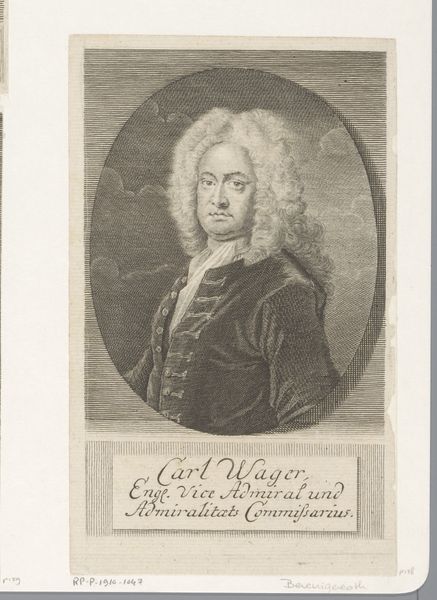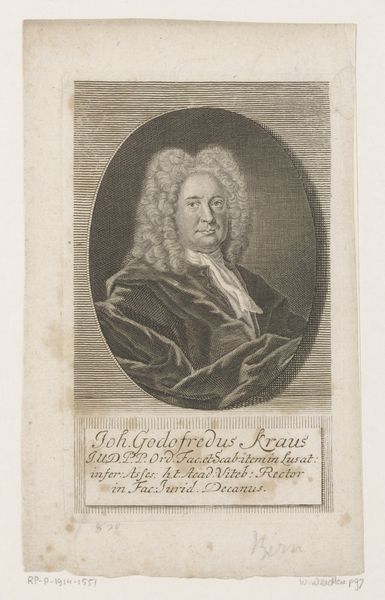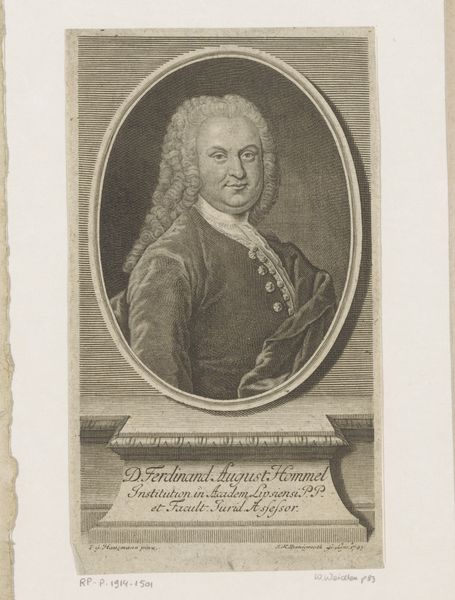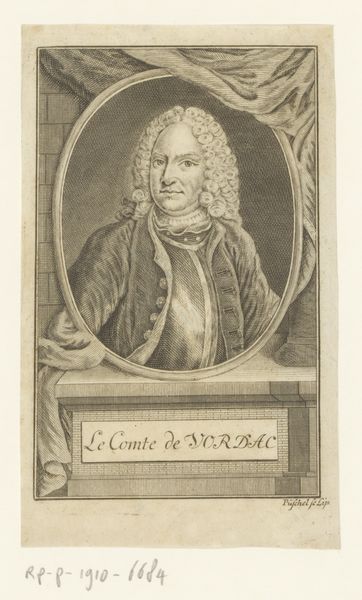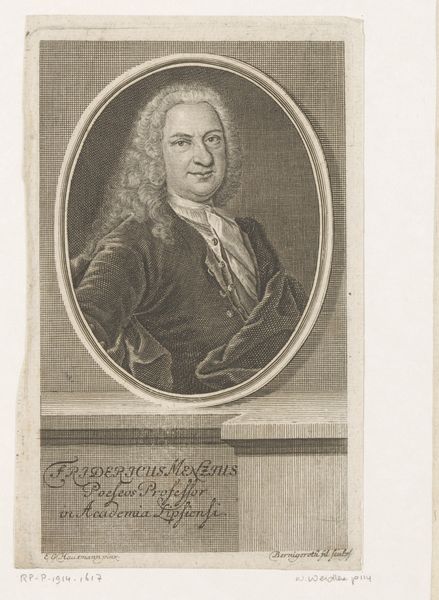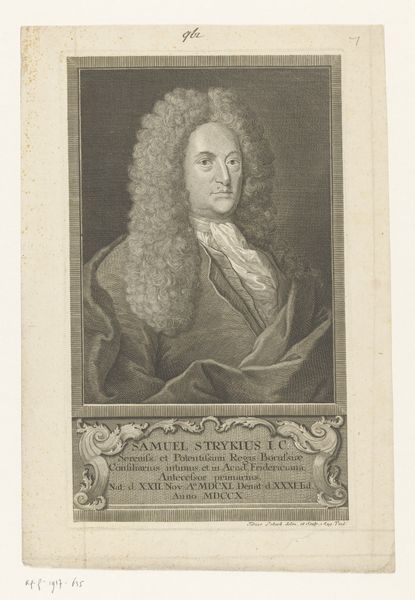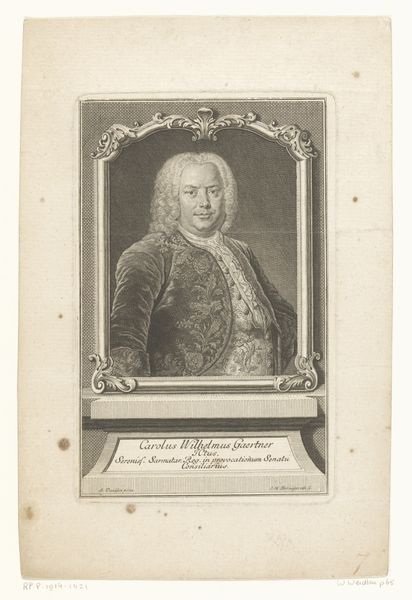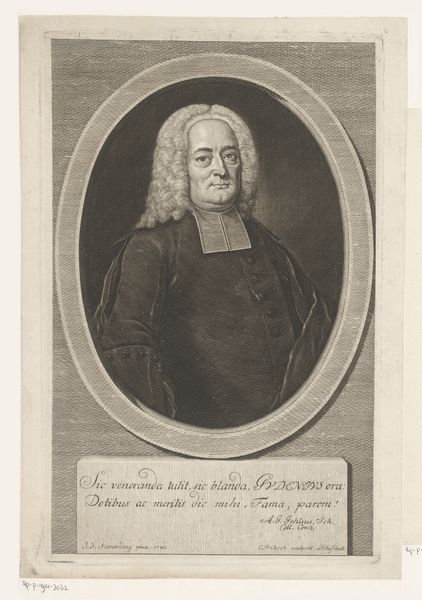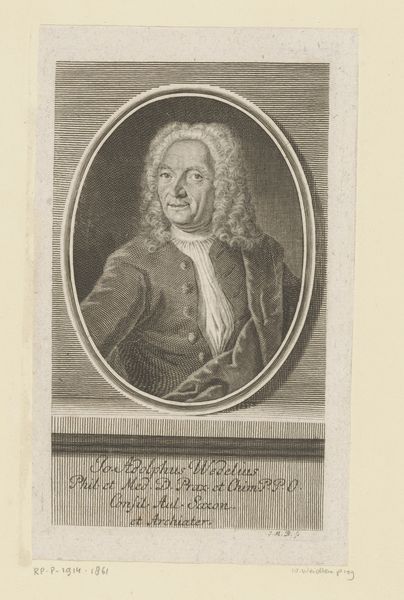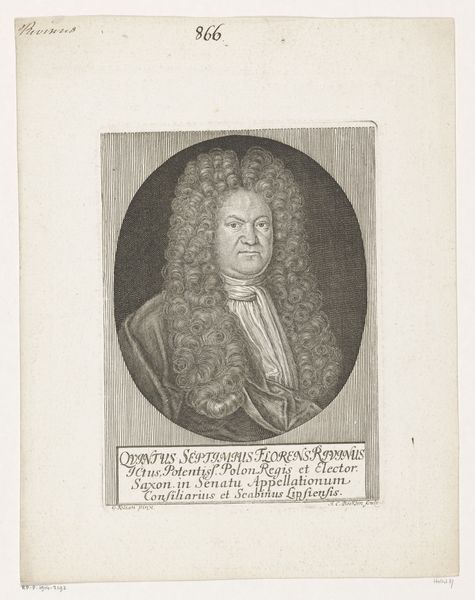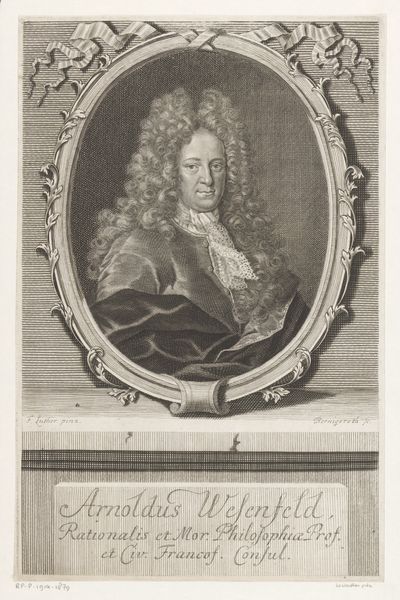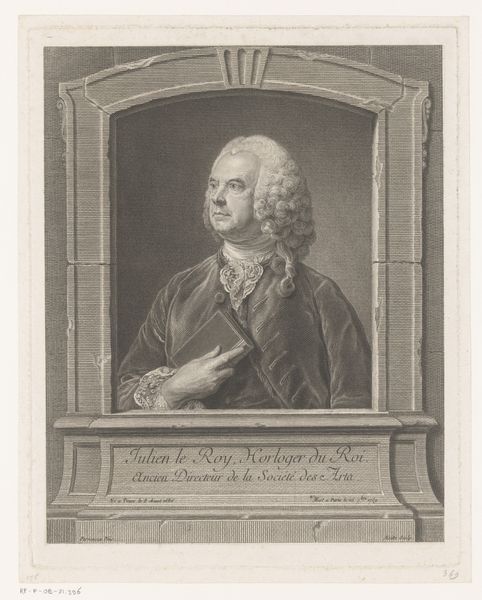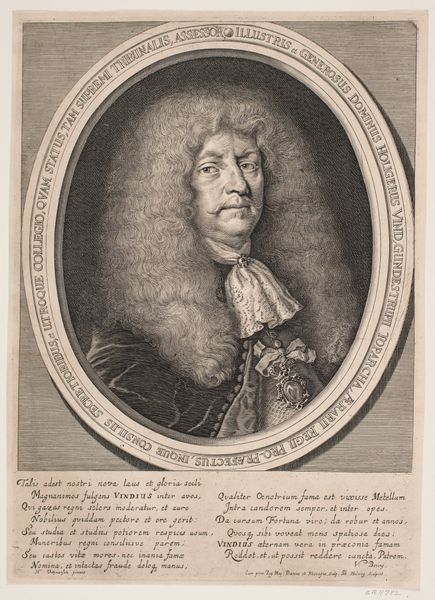
Dimensions: height 155 mm, width 98 mm
Copyright: Rijks Museum: Open Domain
Editor: Here we have Bartolommeo Follin’s "Portret van componist en luitspeler Sylvius Leopold Weiss," dating from around 1740 to 1808. It’s an engraving, giving it a very detailed and almost austere feel. I'm interested in how this print was made. What can you tell us about the production of this artwork? Curator: Well, consider the labor involved in creating an engraving. It’s an incredibly skilled process, demanding intense focus and meticulous handiwork. Someone meticulously etched the design into a metal plate, which was then used to reproduce identical images for circulation. That very act makes you think of the democratization of art facilitated by printmaking. Editor: So, you're saying this print is about more than just a portrait? Curator: Precisely. It is, fundamentally, about access and production. Prints like these were tools for disseminating images and knowledge to a broader public, outside of the elite who could commission paintings. This engraving isn't merely depicting a musician, it embodies a shift in how art was made and consumed, what role does the engraving process itself, the repeatable nature of it, play in the piece's social context? Editor: I guess I hadn't considered the engraving process in that way. I was focused on the image, the sitter and not how that image came to be and was shared. So the choice of print, as a medium, is vital. Curator: Exactly! And it allows us to rethink who art was *for*, and the materials of distribution that enabled it. Editor: That's a fascinating way to look at it. Thanks! Curator: My pleasure! It makes you appreciate the engraving for more than just its aesthetic value.
Comments
No comments
Be the first to comment and join the conversation on the ultimate creative platform.
